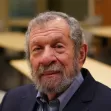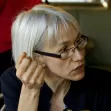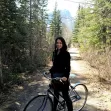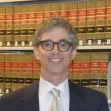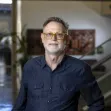The Daily Source of Urban Planning News
Urbanism and Kids
Scott Doyon, a parent and an urbanist, argues that the suburban model isn't doing kids any favors. But, he says, designing urban areas that are kid-friendly is still a challenge.
The True Cost of Solar Power
By the numbers, solar energy comes with a hefty price tag in comparison to other sources. But energy experts claim that the overall value to society offsets the initial high production cost.
Cab's Eye View of L.A.
When other musicians opt to romanticize L.A. with images of Hollywood and Malibu mansions, pop band Death Cab for Cutie captures the opposite in the music video for their new single, "Home Is A Fire."
City of the Future: Two Legs Good, Four Wheels Bad
Once dubbed the "lungs of the city," highways are becoming perhaps less essential. From Seattle to Seoul, pedestrianization is gaining traction on both the domestic and international fronts.
The Pied Piper of Parks
That's how Inga Saffron describes New York's High Line, the unique park built into unused infrastructure that has cities clamoring for their own version. Philadelphia might get one too, on the Reading Viaduct.
Power Struggle (Literally) in the Pacific Northwest
The Economist reports "a case of favoritism towards electricity generated by federal dams" in the Columbia River basin, a stretch of land that encompasses Oregon, Washington state, Idaho, and western Montana.
China to Clone Austrian Hamlet
A state corporation in China has announced plans to reproduce exactly the Austrian village of Halllstadt, down to the smallest detail. Hallstad residents are both flattered and creeped out.
Small Cities and Transit-Dedicated Streets
It is commonly accepted that most U.S. cities couldn't support transit-only streets. But Wellington, New Zealand is a model any U.S. city could follow, writes Jarrett Walker.
Will Congestion Pricing Backfire in the U.S.?
The U.S. Department of Transportation in 2007 selected five cities it thought could effectively implement congestion pricing, but none have come to fruition. What's holding back congestion pricing in the U.S.?
The AIA Stresses Sustainable Approach to Design
Jumping on the climate change bandwagon, the newly appointed CEO of the American Institute of Architects (AIA) Robert Ivy underscores the need to find a healthy medium between sustainability and architecture.
Japan Moves Forward With Maglev Train
Tsunami, earthquakes, and nuclear radiation in the past, Japan proceeds to build a magnetic train that defies Newton's laws of physics.
U.S. Bicycle Master Plan Undergoes a Renaissance
Rendered obsolete in the 1980's, Secretary of Transportation LaHood makes a commitment to bring back a national network of bike routes.
Many African-Americans Seeking Economic Solace in the South
A recent study by Queens College for the New York Times shows that more than 50% of African-Americans who left New York in 2009 moved to the South.
Smart Growth Weathered Housing Crisis Better Than Sprawl
Abigail Gardner of Smart Growth America takes aim at a recent article based primarily on Wendell Cox's correlation of smart growth policies to the housing market bubble and collapse.
The Role of Background Buildings
San Francisco architecture critic John King talks about his new book <a>Cityscapes</a> and the role that so-called "background buildings" play in creating the city's mosaic.
Redesigning the "Fascist" Park in Front of the White House
The National Capital Planning Commission invites the public to weigh-in on five proposals for improvements to the Ellipse, the large public park between White House and the National Mall.
A Big Plan in Many Small Parts
Philadelphia is embarking on a long-term planning effort -- one in a string of many efforts over the past few decades. But this effort is different, compiling many small-scale plans for the city's future.
Yacht Race to Bring New Cruise Terminal to San Francisco
As San Francisco prepares to host the America's Cup yacht race in 2013, one of the key building areas for the event is also being fast-tracked as the site of a new cruise terminal.
High Rise Boomlet Bringing Good and Bad to Chicago
High rise apartment construction is set to take off again in Chicago, though it's unclear for how long and whether the resulting projects will have a positive lasting impact on the city.
Versatile Urban Design: China’s Roadblock Toward Energy Sustainability
Studying neighborhoods in Jinan, China, MIT urban studies and planning Professor Dennis Frenchman told MITnews that the country’s biggest challenge is its homogenous urban design.
Pagination
Yukon Government
Caltrans
New Jersey Institute of Technology
Mpact (founded as Rail~Volution)
City of Camden Redevelopment Agency
City of Norman, Oklahoma
City of Portland
City of Laramie
Urban Design for Planners 1: Software Tools
This six-course series explores essential urban design concepts using open source software and equips planners with the tools they need to participate fully in the urban design process.
Planning for Universal Design
Learn the tools for implementing Universal Design in planning regulations.


























